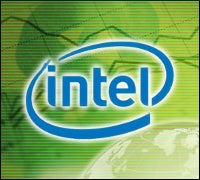 |
Intel today reported second-quarter revenue of $8.0 billion, a significant improvement over first quarter’s $7.1 billion and ahead of projections of around $7.2 billion for this quarter.
Shares of Intel (NASDAQ: INTC) soared in after-hours trading on the news, with the chip giant’s stock price soaring 7.55 percent to $18.10 by press time, after a close at 16.83, up $0.34 or 2.06 percent.
“Our second-quarter results were clearly better than we expected, with demand strengthening throughout the quarter,” Intel President and CEO Paul Otellini told a conference call with investment analysts. “While the global economic environment is still recovering, our customers signaled increasing confidence for an increased second half with their ordering patterns.”
Not everything is rosy just yet for Intel. During its second quarter, the world’s top chipmaker would have reported non-GAAP operating income of $1.4 billion and net income of $1.0 billion, with earnings per share of 18 cents. However, the company was forced to set aside $1.4 billion to account for a European Commission fine for anticompetitive practices, which resulted in a GAAP operating loss of $12 million and a net loss of $398 million or $0.07 per share.
Because it took the hit as part of quarterly operations, cash reserves are unaffected and sit at $3.8 billion.
Intel’s revenue also is down a lot from last year, which Otellini and CFO Stacy Smith both acknowledged during the call. Revenue in Q2 2008 was $9.4 billion and net income was $1.5 billion.
Despite the decline, Intel’s most recent performance still suggests it may be well on the road to recovery, given the collapse that hit the economy in the fourth quarter of 2008.
Gross margin was 50.8 percent, higher than the company’s expectations, though Intel had shied away from making formal projections last quarter.
The quarter saw a strong rebound in mobile processor shipments, along with Atom processors and some strength in enterprise servers. Enterprise client processor volumes remained weak and will likely stay that way this year, Otellini said, and excluding shipments of Intel Atom microprocessors, the average selling price of processors was slightly down sequentially.
Revenue from Atom processors and chipsets was $362 million, up 65 percent sequentially, however.
After just one quarter on the market, the Nehalem-EP processor family now accounts for one-third of dual socket sales and will cross the 50 percent mark in August. Nehalem-EX, the high-end processor for four sockets or more, is on track to ship in the second half of the year.
Right now, though, it’s consumers who are buying.
“Given consumer sales have been the strongest element of this period, we expect some of that to continue in this back to school period, but we’re not expecting it to return to previous levels,” Otellini said.
Enterprise sales are not likely to return this year, but there is likely to be a trend working in Intel’s favor: desktops and servers are three to four years old, or older.
“At some point, those need to be refreshed,” Otellini said. “I think there is an opportunity for that to happen around Windows 7 [slated to ship in October] and our new technologies, but we’re not counting on that happening in large measures in 2009.”
During the second quarter, Intel kept costs under control, with staff reduction of about 2,000 due to previously announced plant closures. Inventories were also down $240 million due to continued demand. Intel did not buy back any shares, but it did pay out $800 million in dividends, according to Smith.
For Q3, the company will close its purchase of Wind River and thus expects a net loss of about $80 million. Revenue is expected to be around $8.5 billion, plus or minus $400 million. Smith said Intel expects to have underutilized capacity — which eats money — through the fourth quarter as Intel converts to 32nm manufacturing.
For the third quarter, Intel projects revenue of $8.5 billion, plus or minus $400 million, with a gross margin of 53 percent, plus or minus 2 percentage points. Depreciation costs will be a hefty $1.2 billion.
Intel is still not making revenue projections for the year.
Update adds comments from today’s earnings call.


